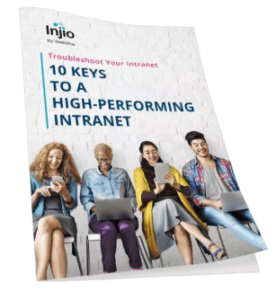Millennials will comprise about 50% of the workforce by 2020[1] and much has been made of this youngest generation of workers, their preferred means of communicating, their expectations of the workplace and their willingness to jump ship if it doesn’t meet these expectations.
According to a 2016 Deloitte survey, Millennials are more likely to report job satisfaction where there is a creative, inclusive working culture (76%) as well as open and free-flowing communication (47% versus 26% where employee satisfaction is low)[1]. When assessing the relative degree of importance when choosing to work for an organisation (excluding salary), work-life balance and the ability to work remotely were identified as two of the three top considerations.
It’s not just Millennials. Most of us have been using laptops, tablets and smartphones for years and expect to have the same mobility when it comes to our working life.
In another survey by Polycom, 70% of millennials said they regularly take advantage of mobile working, and so did just over half of those aged 45-60. When respondents were asked how their companies could improve perceptions of remote working, 62% recommended equipping workers with technology that is easy to use and which connects them to their colleagues. Globally, 91% agreed that technology is a key factor in improving relationships and fostering better teamwork. These responses suggest that both workers and leaders see the value of investing in technology to get more out of individuals and teams.[2]
So how to attract – and more importantly keep – these creative and valuable employees? It is essential to create an environment where people feel like they’re making a valuable contribution each and every day. Where it’s easy for them to express themselves and collaborate with people inside and outside the organisation. Where they can find information and knowledge quite easily, and when they arrive on Day 1 they are ready to go with the hardware, software and access they need to succeed in their role.
“Knowing our workforce and allowing them to be able to collaborate and express themselves when they want, how they want, that’s key in delivering a digital platform. Expressing themselves by email, it takes too long. They express themselves in 120 characters or less.”
Nectarios Lazaris, Global CIO – Unispace
The answer for many organisations is a Digital Workplace, defined by Gartner as “an ongoing, deliberate approach to delivering a more consumer-like computing environment that is better able to facilitate innovative and flexible working practices.” Exactly what our young friends are after.
Having the right tools to work efficiently and collaboratively as well as facilitate flexible work hours doesn’t guarantee staff loyalty among Millennials, Baby Boomers or any other generation but not having them is a recipe for disaster.
For tips on planning and optimising your Digital Workplace, download our FREE guide 10 keys to transform your Intranet into a Digital Workplace.
[1] Microsoft Ignite – Office 365 Groups: What Should I Use, and When? Feb 10, 2017 at 3:33PM by Dux Raymond Sy, Blair Hainsworth
[2] The Changing World of Work – Polycom
This entry was posted in People, Productivity and tagged collaboration, flexible working, millennials. Bookmark the permalink.







